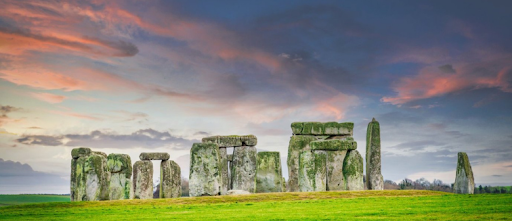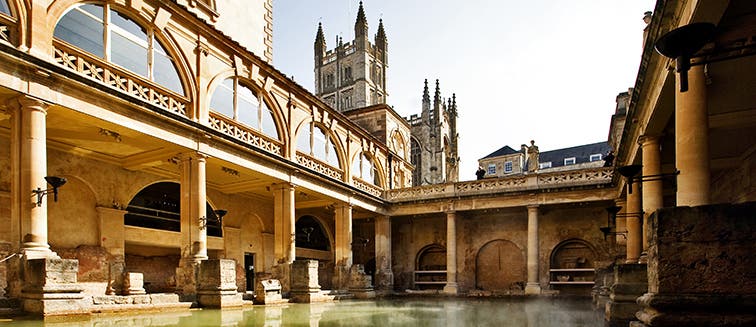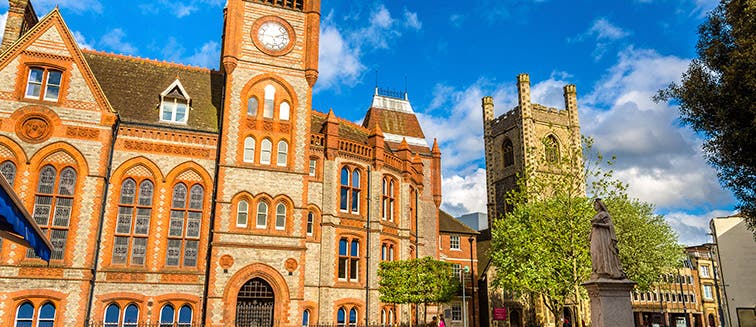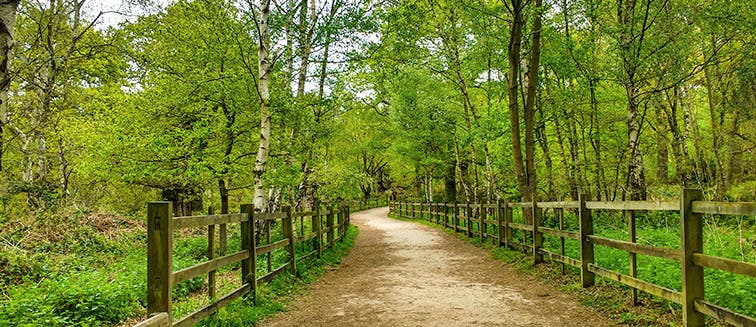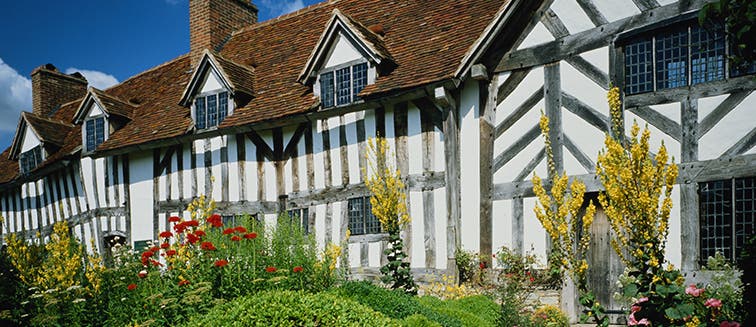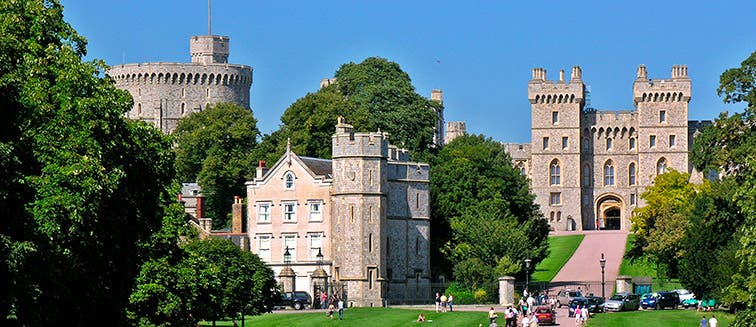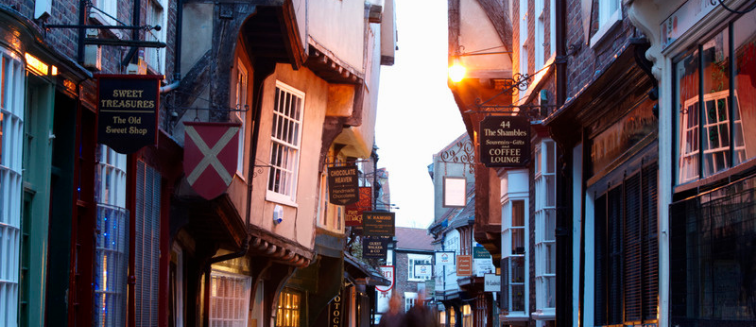Africa
Americas
Asia
Europe
Oceania
Holidays to Europe (97 available)
Albania(2)
Austria(7)
Baltic States(3)
Belgium(5)
Croatia(3)
Cyprus(1)
Czech Republic(5)
Denmark(1)
England(12)
Finland(2)
France(15)
Germany(8)
Greece(12)
Hungary(5)
Iceland(6)
Ireland(9)
Italy(13)
Montenegro(1)
Netherlands(5)
Northern Ireland(2)
Norway(9)
Portugal(9)
Romania(1)
Scotland(6)
Slovakia(1)
Spain(9)
Sweden(2)
Switzerland(4)
By Season
By Interest
By Group
What to see in England
Stonehenge
- Vacations to England
- Points of Interest
Tourist attractions Stonehenge
In the high and green plains of Wiltshire, in the south of England, stands Stonehenge, one of the most intriguing monuments in the world due to its mysterious origins.
The word Stonehenge comes from the union of "stone" and "henge" which means fence, to refer to this circular-shaped monument. To estimate the age of this colossal megalithic structure, we must go back to prehistory. Stonehenge had 3 construction phases distributed between the Neolithic and the Bronze Age, the first beginning between 4000 and 3000 BC, with the completed monument dating from around 2500 BC.
At first, it consisted of 30 sandstone pillars weighing about 25 tons, which, as the name suggests, were carved in a rectangular shape and placed vertically, burying their lower part in the ground. In turn, these were crowned by other horizontal blocks of approximately 7 tons, forming a covered circle. Inside it, another orderly horseshoe-shaped construction was erected that was made up of 5 triliths, and in the middle of it, a large central slab was arranged that would have acted as an altar.
Surrounding this main monument are 50 holes marked with lime. These were burial places where cremation rituals were once performed as offerings to the unknown deities of the time. Finally, surrounding the outermost area, a deep trench was dug. To the northeast, there is a processionary path that leads to the heart of the monument. Unfortunately, turbulent weather and the continuous thefts of the stones has altered the original aesthetics of Stonehenge over the centuries.
Outside the main monument is the famous 30 ton Heelstone from Sarsen, located 77 meters from the centre of the circle to the southwest. It marks the point where the sun rises on the horizon at the summer solstice when viewed from the centre of the circle.
If you visit Stonehenge, be sure to explore Woodhenge, 3.7 kilometres from the main monument. It consists of 6 rings formed by wooden posts within which the skull of a child was found to be buried. It is believed that Woodhenge used to be a place for human sacrifice and it was first discovered in 1926.
As for its actual purpose, there is much speculation. It is believed that the area was an important hunting area and Stonehenge acted as a meeting place to celebrate banquets in order to give thanks for the food that nature bestowed upon the hunters. It is also thought that Stonehenge could be a monument in commemoration of the unification of Great Britain or as a funerary monument that evolved into a temple. Alternatively, it is widely believed that Stonehenge acted as a prehistoric calendar and astronomical observatory, enabling the people of the time to predict the seasons.
There are many legends that have existed during all these years around this fascinating construction. Its construction has been linked to the Magician Merlin, to Druids, Celtic priests or even the Romans, Phoenicians and Danes. Some theories go even further, alluding that Stonehenge was constructed by beings from another planet! In addition, Stonehenge has featured in many songs by popular British artists such as The Beatles and Black Sabbath.
If you travel to Stonehenge, you’re sure to wonder how these giant stones were moved over 200 kilometres from West Wales to Wiltshire. Geologists have determined that the 42 small stones known as the blue stones, came from the Preseli Mountains. Archaeologists first believed that they used a wooden ball bearing system to move them, but the theory that they were rolled inside a ball woven from willow and alder trees has gained more traction in recent years.
Today more than a million people a year choose to travel to Stonehenge to admire this legendary stone circle, protected by English Heritage and declared a World Heritage Site by UNESCO since 1986. It is a popular day trip from London, and near Stonehenge, you can also visit the beautiful cities of Amesbury and Salisbury.
Despite all the hypotheses that have been considered by researchers, the truth is that the origin and meaning of Stonehenge are not known with absolute certainty, so the mystery continues to this day! Of course, visiting Stonehenge is most magical during the Winter or Summer Solstice, when Druids and mystics descend on the site for their bi-annual celebrations of light and darkness.
OUR BEST TRIPS TO STONEHENGE
YOU ALSO LIKE
England
12 Trips
France
15 Trips
Hungary
5 Trips
Ireland
9 Trips
Italy
13 Trips
Netherlands
5 Trips
Northern Ireland
2 Trips
Portugal
9 Trips
Scotland
6 Trips
Spain
9 Trips
United Kingdom
Notify me when available
Russia
Notify me when available
Poland
Notify me when available
Iceland
6 Trips
Germany
8 Trips
Czech Republic
5 Trips
Belgium
5 Trips
Austria
7 Trips
Greece
12 Trips
Croatia
3 Trips
Baltic States
3 Trips
Norway
9 Trips
Finland
2 Trips
Denmark
1 Trips
Switzerland
4 Trips
Romania
1 Trips
Slovenia
Notify me when available
Sweden
2 Trips
Slovakia
1 Trips
Faroe Islands
Notify me when available
Montenegro
1 Trips
Ukraine
Notify me when available
Cyprus
1 Trips
Albania
2 Trips
North Macedonia
Notify me when available
Tourist attractions england
Points of interests
- Trips to Bath
- Trips to Bristol
- Trips to Cambridge
- Trips to Leeds
- Trips to Liverpool
- Trips to London
- Trips to Manchester
- Trips to Oxford
- Trips to Reading
- Trips to Sherwood Forest
- Trips to Stamford
- Trips to Stonehenge
- Trips to Stratford-Upon-Avon
- Trips to Thames River
- Trips to Windsor
- Trips to York
Other Points of interests
- Trips to Agrigento
- Trips to Alberobello
- Trips to Albufeira
- Trips to Algarve
- Trips to Alhambra
- Trips to Alsace
- Trips to Amalfi Coast
- Trips to Amsterdam
- Trips to Annecy
- Trips to Aran Islands
- Trips to Assisi
- Trips to Athlone
- Trips to Avignon
- Trips to Azores
- Trips to Barcelona
- Trips to Basque Country
- Trips to Belfast
- Trips to Bermeo
- Trips to Biarritz
- Trips to Bilbao
- Trips to Blarney Castle
- Trips to Bologna
- Trips to Bordeaux
- Trips to Braga
- Trips to Budapest
- Trips to Bunratty Castle
- Trips to Cabo Girão
- Trips to Caen
- Trips to Cannes
- Trips to Catania
- Trips to Cefalu
- Trips to Chambord
- Trips to Chamonix-Mont-Blanc
- Trips to Champagne Wine Region
- Trips to Cinque Terre
- Trips to Cliffs of Moher
- Trips to Coimbra
- Trips to Colmar
- Trips to Connemara National Park
- Trips to Consuegra
- Trips to Córdoba
- Trips to Cork
- Trips to Costa del Sol
- Trips to Costa Dorada
- Trips to Covadonga
- Trips to Curral da Freiras
- Trips to Delft
- Trips to Douro River
- Trips to Douro Valley
- Trips to Dublin
- Trips to Edinburgh
- Trips to Enniskillen
- Trips to Evora
- Trips to Eze
- Trips to Faial Island
- Trips to Fátima
- Trips to Florence
- Trips to French Riviera
- Trips to Funchal
- Trips to Galway
- Trips to Gaztelugatxe
- Trips to Genova
- Trips to Giant's Causeway
- Trips to Glasgow
- Trips to Gran Canaria
- Trips to Granada
- Trips to Guimaraes
- Trips to Inverness
- Trips to Ischia
- Trips to Isle of Skye
- Trips to Keukenhof
- Trips to Kilkenny
- Trips to Killarney National Park
- Trips to Kinderdijk
- Trips to La Concha Beach
- Trips to La Rioja
- Trips to Lake Como
- Trips to Limerick
- Trips to Lisbon
- Trips to Loire Valley
- Trips to Londonderry
- Trips to Lourdes
- Trips to Lyon
- Trips to Machico
- Trips to Madeira
- Trips to Madrid
- Trips to Mallorca
- Trips to Milan
- Trips to Monaco
- Trips to Monsanto
- Trips to Mont Saint Michel
- Trips to Montecatini Terme
- Trips to Mosque of Cordoba
- Trips to Mulhouse
- Trips to Naples
- Trips to Nazare
- Trips to Nice
- Trips to Normandy
- Trips to Obidos
- Trips to Orvieto
- Trips to Oviedo
- Trips to Padua
- Trips to Palermo
- Trips to Palma de Mallorca Old Town
- Trips to Paris
- Trips to Pico do Arieiro
- Trips to Pico Island
- Trips to Pinhão
- Trips to Pisa
- Trips to Pompeii
- Trips to PortAventura
- Trips to Porto
- Trips to Porto Moniz
- Trips to Ragusa
- Trips to Ring of Kerry
- Trips to Rock of Cashel
- Trips to Rome
- Trips to Ronda
- Trips to Rotterdam
- Trips to Salamanca
- Trips to San Sebastian
- Trips to Santana
- Trips to Santander
- Trips to Santuario de Loyola
- Trips to São Jorge Island
- Trips to São Vicente
- Trips to Sardinia
- Trips to Scottish Highlands
- Trips to Seine river
- Trips to Seville
- Trips to Sicily
- Trips to Sintra
- Trips to Speyside
- Trips to St. Andrews
- Trips to Stirling
- Trips to Strasbourg
- Trips to Syracuse
- Trips to Tavira
- Trips to Tenerife
- Trips to The Hague
- Trips to Toledo
- Trips to Tours
- Trips to Trossachs
- Trips to Tuscany
- Trips to Valencia
- Trips to Venice
- Trips to Versailles
- Trips to Waterford
- Trips to Zaragoza
- Trips to Zarauz
Countries Nearby
- Albania Trips
- Austria Trips
- Baltic States Trips
- Belgium Trips
- Croatia Trips
- Cyprus Trips
- Czech Republic Trips
- Denmark Trips
- England Trips
- Faroe Islands Trips
- Finland Trips
- France Trips
- Germany Trips
- Greece Trips
- Hungary Trips
- Iceland Trips
- Ireland Trips
- Italy Trips
- Montenegro Trips
- Netherlands Trips
- North Macedonia Trips
- Northern Ireland Trips
- Norway Trips
- Poland Trips
- Portugal Trips
- Romania Trips
- Russia Trips
- Scotland Trips
- Slovakia Trips
- Slovenia Trips
- Spain Trips
- Sweden Trips
- Switzerland Trips
- Ukraine Trips
- United Kingdom Trips
Trip Styles
- Croatia Nature Vacation Packages Trips
- Croatia Solo Travel Packages Trips
- Czech Republic Couples Tours Trips
- England Solo Travel Experiences Trips
- France Nature Trips with Exoticca Trips
- France Tours for Couples with Exoticca Trips
- France Solo Tours - Exoticca Trips
- Solo Travel in Germany Trips
- Germany Cultural Tours Trips
- Germany Tours for Couples Trips
- Greece Nature Vacation Packages Trips
- Greece Cultural Tour Packages Trips
- Greece Solo Travel Adventures Trips
- Family Greece Trips
- Iceland Solo Travel Trips
- Iceland Cultural Tours Trips
- Iceland Nature Vacation Packages Trips
- Solo Travel Ireland - Tour Packages Trips
- Ireland Nature Vacation Packages Trips
- Italy Nature Travel Adventures Trips
- Family Italy Trips
- Solo Travel Italy Packages Trips
- Norway Nature Tours Trips
- Norway Solo Tours with Exoticca Trips
- Norway Cultural Tours Trips
- Portugal Nature Vacation Packages Trips
- Solo Travel in Portugal Trips
- Portugal Cultural Tours Trips
- Portugal Couples' Tours Trips
- Spain Cultural Tours - Exoticca Trips
- Spain Tours for Couples Trips
- Spain Nature Vacation Packages Trips
- Spain Solo Travel Packages Trips
- Switzerland Solo Travel Trips
- Switzerland Nature Vacation Packages Trips
Susbscribe to our newsletter and join Exoticca GO
The best travel deals
Exclusive promotions
Expert travel tips
